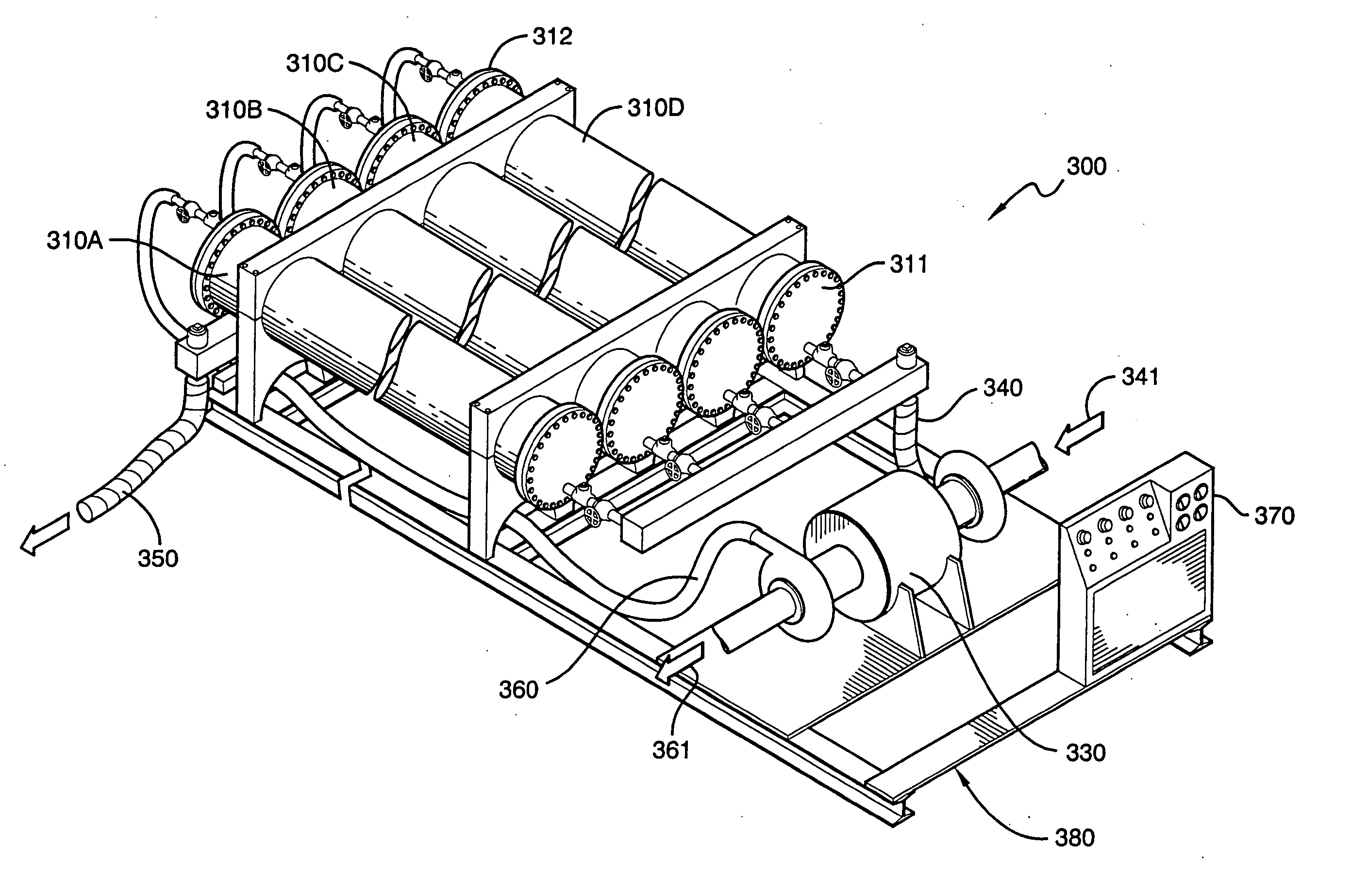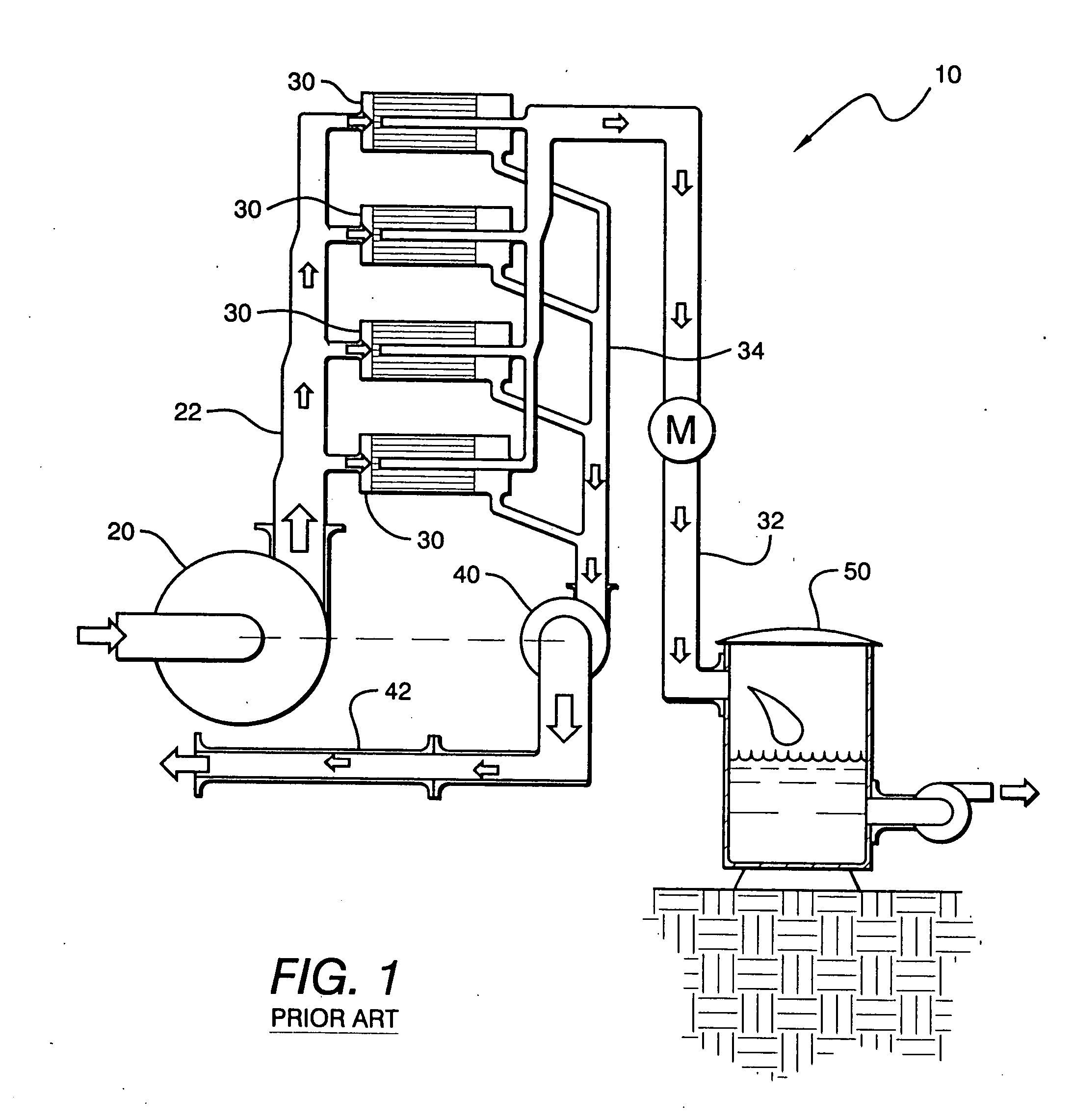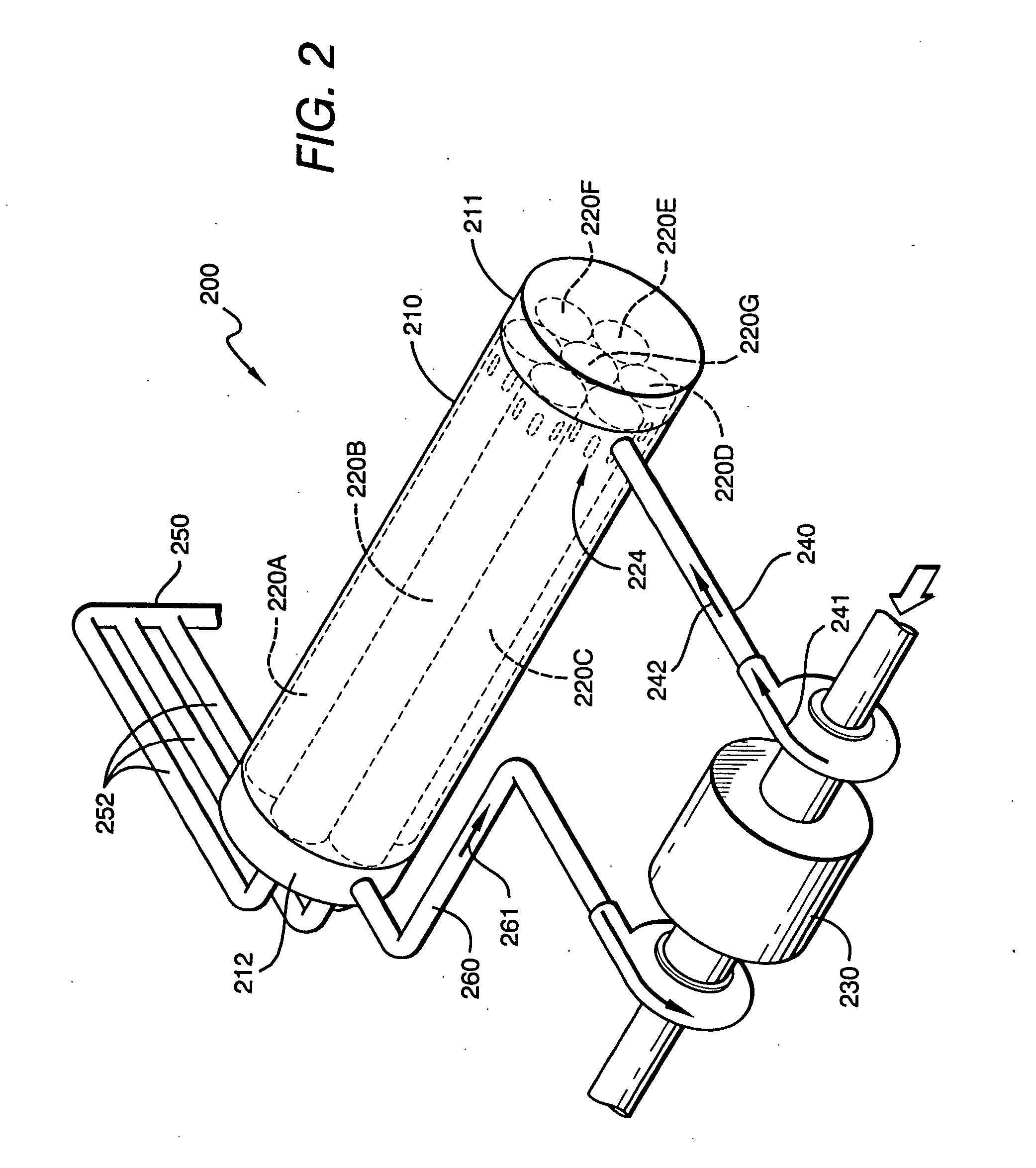Filtration system with anti-telescoping device
a technology of telescopic device and filtration system, which is applied in the direction of filtration separation, membranes, separation processes, etc., can solve the problems of high energy cost associated with producing the required pressure across the membrane, excessive fouling of the membrane, and often polluted water, so as to reduce the coupling ratio
- Summary
- Abstract
- Description
- Claims
- Application Information
AI Technical Summary
Benefits of technology
Problems solved by technology
Method used
Image
Examples
Embodiment Construction
[0026] In FIG. 2 a preferred filtration system 200 generally comprises an outer casing 210 containing multiple internal casings 220A-220G in which filters (not shown) are disposed, and a pump / energy recovery unit 230. Feed fluid is fed to the end plate subassembly 211 of the outer casing 210 from feed fluid line 240, and passes into the internal casings 220A-220G via openings 224 in the walls of the internal casings 220A-220G. The feed fluid is filtered by the filters, with permeate being removed from the internal casings 220A-220G at end plate subassembly 212 via permeate manifold 252 and permeate line 250, and waste fluid being removed from the internal casings 220A-220G via waste fluid line 260. Arrows 241 and 242 depict fluid flow in line 240, and arrow 261 depicts fluid flow in line 260.
[0027] The outer casing 210 advantageously comprises a hollow cylinder, although other elongated shapes including those having triangular, rectangular, or octagonal cross sections are also cont...
PUM
| Property | Measurement | Unit |
|---|---|---|
| length | aaaaa | aaaaa |
| diameter | aaaaa | aaaaa |
| pressure drop | aaaaa | aaaaa |
Abstract
Description
Claims
Application Information
 Login to View More
Login to View More - R&D
- Intellectual Property
- Life Sciences
- Materials
- Tech Scout
- Unparalleled Data Quality
- Higher Quality Content
- 60% Fewer Hallucinations
Browse by: Latest US Patents, China's latest patents, Technical Efficacy Thesaurus, Application Domain, Technology Topic, Popular Technical Reports.
© 2025 PatSnap. All rights reserved.Legal|Privacy policy|Modern Slavery Act Transparency Statement|Sitemap|About US| Contact US: help@patsnap.com



